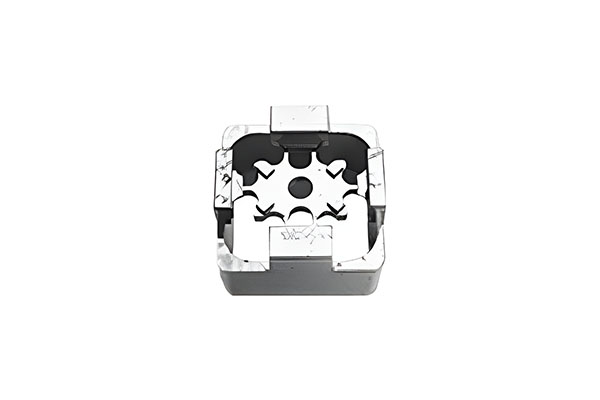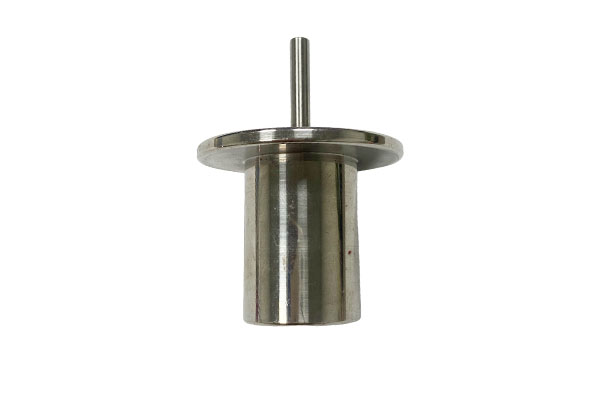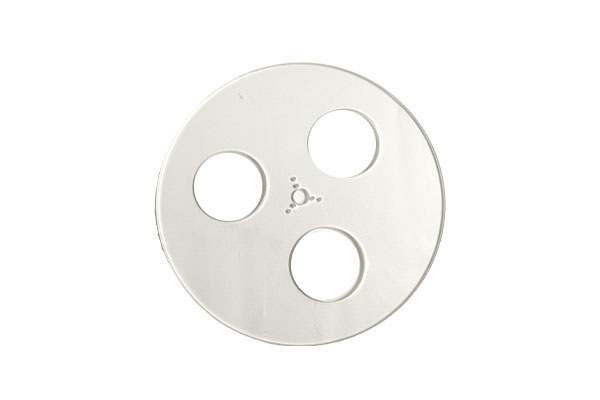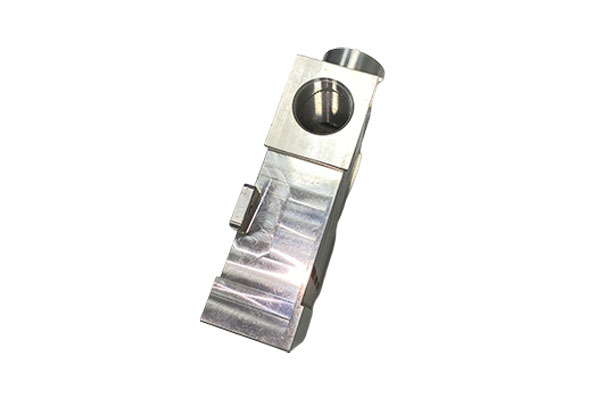How does insulation parts processing achieve precise machining of unusual shapes and complex hole locations?
Release Time : 2025-10-27
In modern industrial equipment, insulation components have long transcended simple electrical isolation, increasingly assuming complex roles such as structural support, spatial layout, and environmental protection. This is particularly true in new energy vehicle electronic control systems, high-voltage switchgear, rail transit traction equipment, and precision instruments. Insulation components often need to fit into confined spaces, adapt to complex circuits, and withstand multiple stresses. This requires not only excellent electrical performance but also highly customized, unusual contours and precise hole layouts. Traditional standard parts are no longer sufficient, and the processing of non-standard insulation parts is becoming a critical component in ensuring equipment safety and compact design.
The key to achieving precise machining of unusual shapes and complex hole locations lies in the deep integration of advanced manufacturing processes and material properties. Modern insulation parts processing generally utilizes high-precision CNC machine tools, which use 3D programming to transform design drawings into precise tool paths. Whether it's curved contours, stepped counterbores, or irregular mounting slots, CNC systems can drive multi-axis linkage to complete cutting of complex spatial trajectories. This digital machining method eliminates the limitations of traditional molds and enables single-piece or small-batch production without the need for molds, significantly increasing design freedom and responsiveness.
The selected insulation material itself must also possess excellent machinability. Common materials such as Bakelite, nylon, PEEK, and ceramic-reinforced composites maintain high dielectric strength while possessing appropriate hardness and toughness, making them resistant to cracking and allowing smooth cutting by cutting tools. The material's internal structure must be uniform, free of bubbles or impurities, ensuring that localized stress concentrations during drilling or milling will not cause burrs or microcracks. This is particularly important for insulation components exposed to high-voltage environments, where any surface imperfections can serve as a starting point for electric field concentration, leading to creepage or breakdown.
Details determine success during machining. Hole edges are meticulously chamfered or polished to eliminate sharp edges and prevent corona discharge. Deep hole machining utilizes specialized drill bits and cooling processes to avoid chip buildup and shifting. Strict relative positional accuracy is maintained between multiple holes to ensure perfect alignment with metal parts or other components. For ultra-thin or cantilevered structures, fixture design is particularly critical, requiring stable support without damaging the workpiece and preventing vibration or deformation that could affect dimensional consistency.
The key to achieving precise machining of unusual shapes and complex hole locations lies in the deep integration of advanced manufacturing processes and material properties. Modern insulation parts processing generally utilizes high-precision CNC machine tools, which use 3D programming to transform design drawings into precise tool paths. Whether it's curved contours, stepped counterbores, or irregular mounting slots, CNC systems can drive multi-axis linkage to complete cutting of complex spatial trajectories. This digital machining method eliminates the limitations of traditional molds and enables single-piece or small-batch production without the need for molds, significantly increasing design freedom and responsiveness.
The selected insulation material itself must also possess excellent machinability. Common materials such as Bakelite, nylon, PEEK, and ceramic-reinforced composites maintain high dielectric strength while possessing appropriate hardness and toughness, making them resistant to cracking and allowing smooth cutting by cutting tools. The material's internal structure must be uniform, free of bubbles or impurities, ensuring that localized stress concentrations during drilling or milling will not cause burrs or microcracks. This is particularly important for insulation components exposed to high-voltage environments, where any surface imperfections can serve as a starting point for electric field concentration, leading to creepage or breakdown.
Details determine success during machining. Hole edges are meticulously chamfered or polished to eliminate sharp edges and prevent corona discharge. Deep hole machining utilizes specialized drill bits and cooling processes to avoid chip buildup and shifting. Strict relative positional accuracy is maintained between multiple holes to ensure perfect alignment with metal parts or other components. For ultra-thin or cantilevered structures, fixture design is particularly critical, requiring stable support without damaging the workpiece and preventing vibration or deformation that could affect dimensional consistency.
Furthermore, the realization of special-shaped structures relies on a deep understanding of assembly relationships. Insulation parts processing often requires avoiding conductors, fixing bolts, heat dissipation channels, and signal cables. Their shapes may be the result of the superposition and cutting of multiple geometric shapes. Fabricators typically collaborate closely with customers, starting with original drawings or physical prototypes to conduct reverse modeling and structural optimization, minimizing structural simplification and minimizing interference while ensuring insulation distances. This integrated "design + manufacturing" service model elevates special-shaped parts from simple part replication to a crucial component of system integration.
Ultimately, every special-shaped insulation part is the culmination of both functionality and craftsmanship. It must not only "look right" but also "perform reliably." Unseen within the device, it isolates current with precise form, withstands pressure with reliable structure, and guides assembly with precise hole placement. From a raw sheet of metal to a complex part, every cut pushes the boundaries of design, and every process safeguards the bottom line of electrical safety. It is this ultimate pursuit of shape and precision that allows insulation parts to quietly create a space for safe operation in modern high-end equipment.







